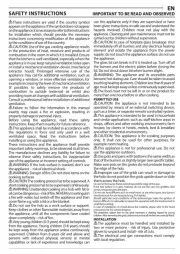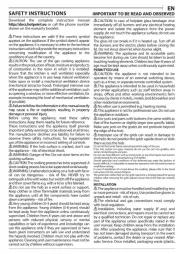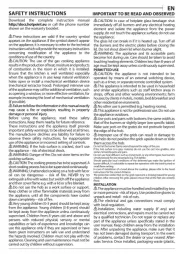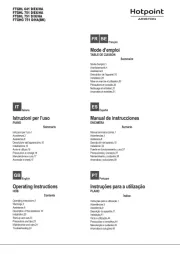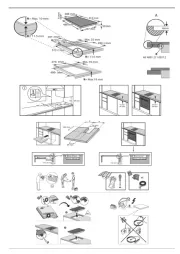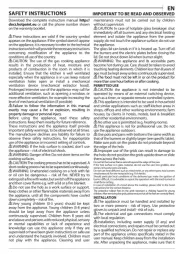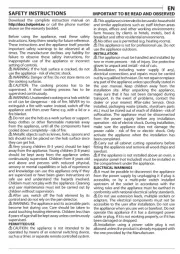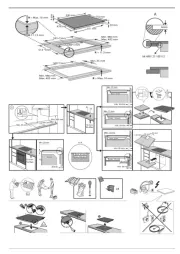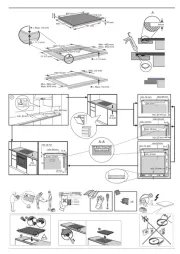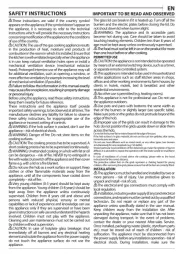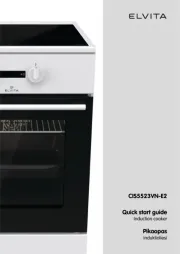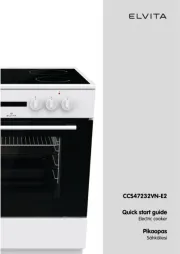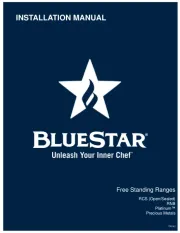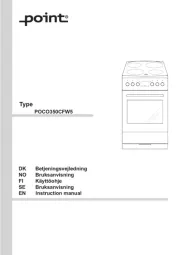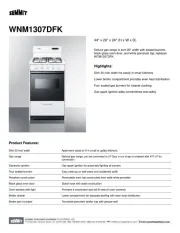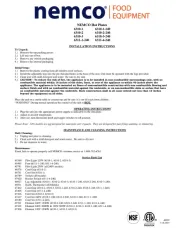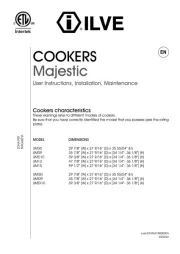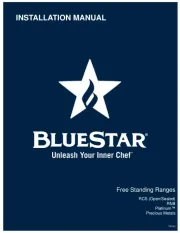Safety Instructions . . . .2–7, 25
Operating Instructions
Aluminum Foil . . . . . . . . .12, 13
Clock and Timer . . . . . . . . . .10
Oven . . . . . . . . . . . . . . . . .10–15
Baking and Roasting . . . . . .12
Broiling . . . . . . . . . . . . . .13, 14
Broiling Guide . . . . . . . . . . .14
Oven Control . . . . . . . . . . . .11
Power Outage . . . . . . . . . . . .11
Preheating . . . . . . . . . . . . . .12
Surface Cooking . . . . . . . . .8, 9
Thermostat Adjustment . . . .15
Care and Cleaning
Air Vents . . . . . . . . . . . . . . . . .21
Broiler Pan and Grid . . . . . . .21
Burner Assemblies . . . . . .16–18
Burner Caps and Heads . . . .18
Burner Grates . . . . . . . . . . . . .17
Control Panel and Knobs . . .21
Cooktop Surface . . . . . . . . . .19
Drip Pans . . . . . . . . . . . . . . . . .16
Lift-Off Oven Door . . . . . . . .20
Lift-Up Cooktop . . . . . . . . . . .19
Oven Bottom . . . . . . . . . . . . .20
Oven Interior . . . . . . . . . .22, 23
Removable Broiler Drawer . .21
Racks . . . . . . . . . . . . . . . . . . . .22
Stainless Steel Surfaces . . . . .19
Installation
Instructions . . . . . . . . . . .24–39
Anti-Tip Device . . . . .28, 38, 39
Connect the Range
to Gas . . . . . . . . . . . . . . . . .29–32
Convert to LP Gas . . . . . . . . .39
Dimensions and
Clearances . . . . . . . . . . . . . . . .27
Electrical Connections . .33, 34
Level the Range . . . . . . . . . . .38
Light the Pilots . . . . . . . . .34–37
Troubleshooting Tips . .40–42
Accessories . . . . . . . . . . . . . . .45
Consumer Support
Consumer
Support . . . . . . . . . .Back Cover
Ownership Registration
for Customers in Canada
only . . . . . . . . . . . . . . . . . .43, 44
Warranty for Customers
in Canada . . . . . . . . . . . . . . . .47
Warranty for Customers
in the U.S.A. . . . . . . . . . . . . . .46
Ranges
183D5580P236 49-85154 01-09 JR
Standard-Clean
Models:
Owner’s Manual
& Installation
Instructions
GEAppliances.com
Write the model and serial
numbers here:
Model # ______________________
Serial # ______________________
You can find them on a label on
the front of the range behind the
kick panel or broiler drawer.
RGB508
RGB524
RGB528
RGB530
RGB533
RGB540
Non-Self-Cleaning Gas
In Canada, contact us at:
www.GEAppliances.ca

